Of Filters and Man
The Article is prepared by Riccardo Mantero, Irix Ambassador
Now I have to admit that I’m a landscape addict. I can say I’ve been such a romantic individual ever since those days of innocence, even when I wasn’t a photographer. Since I was a child out accompanying my father hunting, watching all those sunrises and sunsets, I developed a true love for the landscape. Even now, after seeing a lot of stunning and incredible situations around the world, I cannot resist being totally captivated by a sunset or a sunrise outside of my window at home.
As far as I can remember, one of my dreams has always been to show these kinds of scenes to others, and in a way I live and experience them. Now, thanks to digital photography and plenty of technique, I can finally live out my dreams.
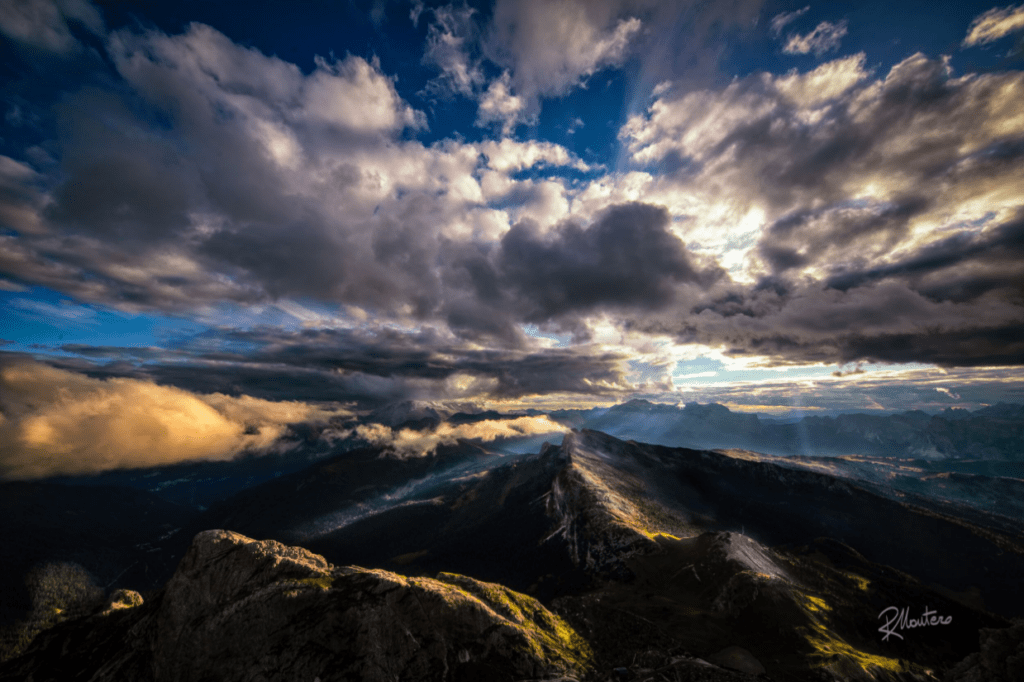
[Nikon D810 – Irix 11mm 1/125 at f/10 ISO 100 – tripod]
My landscapes have to look like fairytales and, once printed on a large surface, must give the observer the illusion that they can step inside them, rather like stepping into a fable.
So, during my photographic journey I tried developing my own style in order to capture images that I defined as, for fun, ‘dreamscapes’. I did that using the best tools I could find on the market and elsewhere. The things among the several tools that helped me to achieve my ‘dreamscaper’ goals are, of course. the filters.
I began my journey with some of the common filters one can use: cheap polarizers.
Clearly, once I screwed it onto my lens I immediately got stunning and satisfactory results; so much so that I decided that I would never have to take remove it. Deep blue and dark skies against brilliant green trees; clear and sharp foliage and vegetation; transparent crystal water without reflections or shimmer.
Everything great then, and all from just spending a few bucks on a piece of glass of some unknown brand. Really? Haven’t you ever felt in your experiences that sensation of “hey! This is too easy”!
No? Okay… so you’re on the right path. Or maybe you’re in the wrong one.
I reached this latter conclusion as my sensibilities grew as regards the quality of the images I was producing. In fact I was looking at them without an ecstatic “eye of the beginner”. With my increasing technical knowledge, I could see that they were really full of awful artefacts: halos, bands, fringes, dark middle spots, and anything that a bad glass can produce.
However, one should consider this point: a skilled staff of engineers and optics experts strived to produce the most perfect balance between particular groups of lenses. They worked tirelessly in order to achieve the best possible sharpness, but find that sharpness in all apertures isn’t at all possible except in the sweet spot of each lenses. Then you, an absolute beginner, decided to place a piece of glass with the same quality as the bottom of a bottle in front of all this, hoping to obtain the masterwork of your life, and…
Surprise! You get it! Okay… definitely too easy!
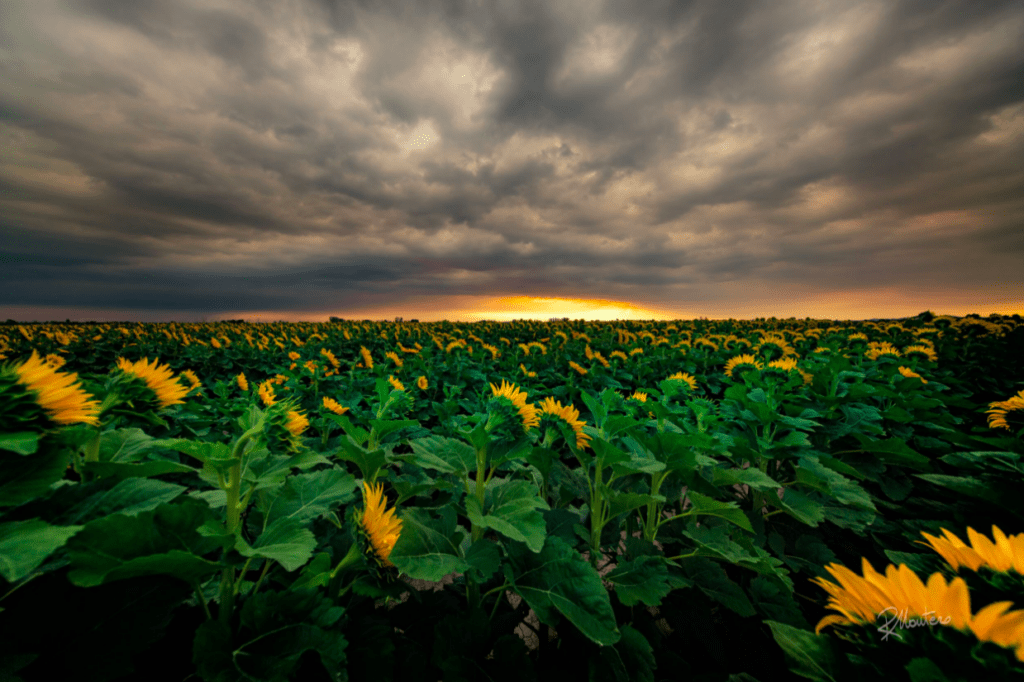
[Nikon D850 – Irix 11mm – 1s at f/5.6 ISO100 – ND16 Gelatine Filter rear mounted]
So, having identified the problems, did I ditch my lovely polariser filter? No, I just bought a better one. More expensive for sure, but more often than most in optics, quality is related to cost. Furthermore I did something that I believe was fundamental: I’ve learned, or at least, I tried to learn, how to use it at its best, and when, and where! And better results soon came: no more halos, no more fringes, just well-defined photos, and with all the effects I planned to achieve, all in their exact place.
So what’s the conclusion here? Well, filters aren’t the solution, but they can be; quality is what’s necessary to make such a solution work.
Going deeper, it is better not to limit our curiosity to the polariser filters; in fact, there are a lot more that can be used in order to achieve different and interesting results. Like Neutral Density filters, these can be used to extend the exposure times on really bright days or to achieve some kinds of special effect, such as letting people disappear from an overcrowded place, or letting the clouds design classical streaks during a windy day.
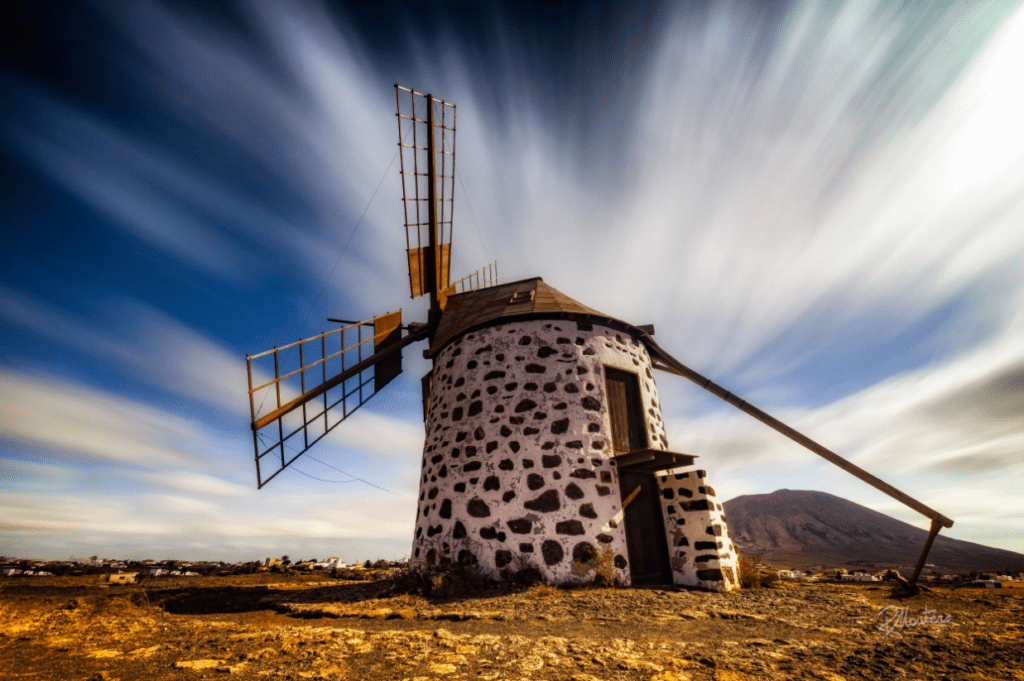
[Nikon D810 – Irix 15 mm 122sec at f/22 ISO 50 – tripod – Gelatin ND8 filter + front ND1000]
Going back to my case, being a landscape addict and a wide angle exploiter, I’ve recently adopted the Irix “ecosystem”. I usually mount the Irix 11mm f/4 when deciding that I want something extreme, and use the Irix 15mm f/2.4 several times when I need to use the front filters.
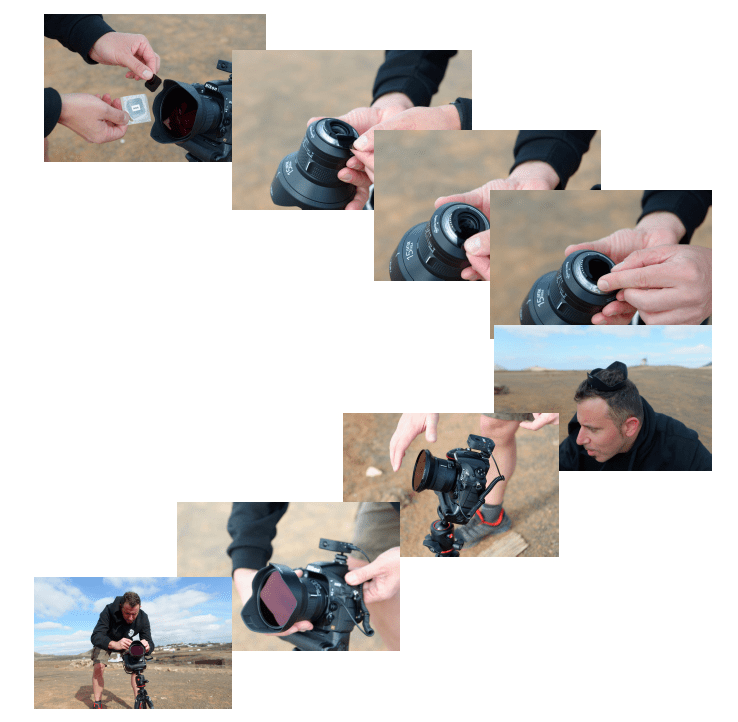
In fact, despite the fact that there aren’t round filters for the 11mm – and the slide filters are really expensive – you can always mount some gelatin filters (from ND4 to ND16) behind the lens. When combining them with the narrowest available aperture (f/22) and the lowest possible ISO setting, you can obtain some longer exposures.
Or, if you need longer times, you can combine them on the 15mm, together with the front filters.
In this example, due to the significant amount of light during the ‘FuerteXperience2017’ workshop that I held in Fuerteventura with ShutterGuild, I had to combine an ND8 (I didn’t have the ND16, my bad) gelatin filter with a ND1000 front filter.
The only trick I would like to recommend in situations like these is to focus BEFORE mounting the filters, then using the Focus Lock ring to fix it, because, after mounting the filters – or focusing through two ND filters – it will be really difficult to organise your image. (Although it’s possible using Live – View and ISO at their maximum, it’s still difficult.)
Recently Irix introduced a new slide filter system onto the market called the EDGE Square System, and it’s here that the gigantean leap in my ‘filter life’ happened. In fact, these filters aren’t only limited for use with Irix lenses, nor are they meant to be used as a single slide, but they have produced adapters suitable for my other lenses. Furthermore, there’s a wide range of graduated neutral densities. That means that each filter has two tones, one dark and one transparent. In that way, you can register the image with a far greater dynamic rangewith a long shutter speed, without risk of ‘burn’, for example, the clouds in the sky.
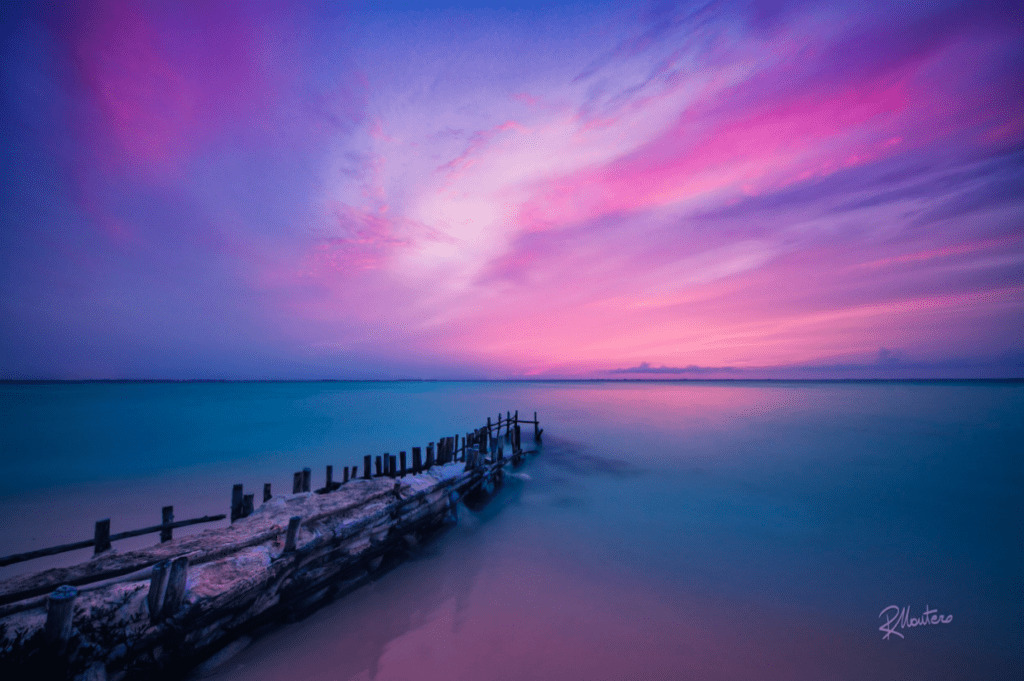
[IRIX 11mm f/4 at f/11 8Sec exp ISO100 with ND16 back gelatin filter]
Last but not least, square filters can be combined in several ways with other filters in order to achieve different long exposure-times, and tones with some interesting outcomes – Irix Edge IFH-100 Filter Holder allows us to stack up to two filters at the same time. For example, in the next image, I’ve managed to have two different tones of light, one for the sky, and one for the little flowers and the ground; these can be noticed in the left ‘making of’ shot between the tripod legs.
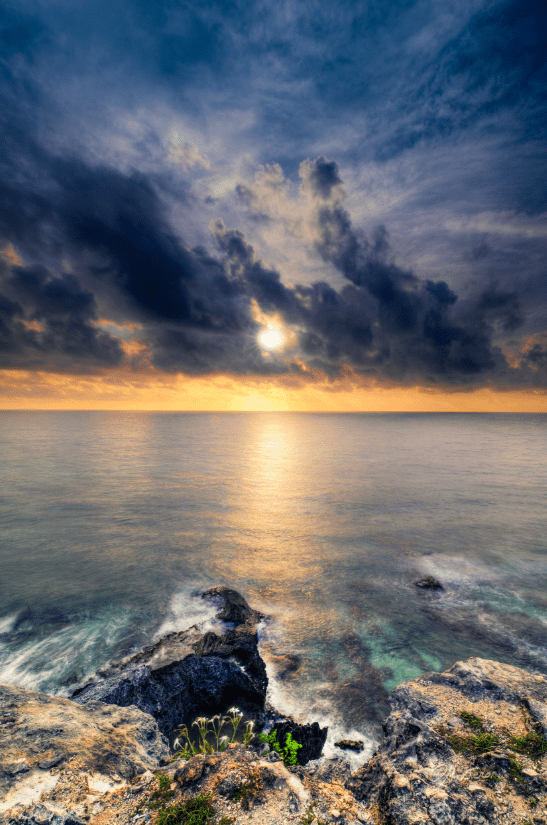
[Irix 15mm f/2.8 – 1.6s at f/22 ISO 64 – tripod – Irix EDGE 100mm Filters]
For this shot I used the Irix EDGE Reverse nano GND8 0.9 3EV slide filter, mounted in the front slot of the Irix EDGE IFH-100 Filter Holder (which has two slots for slide filters), combined with the Irix EDGE ND1000 slide filter in the back slot of the holder.
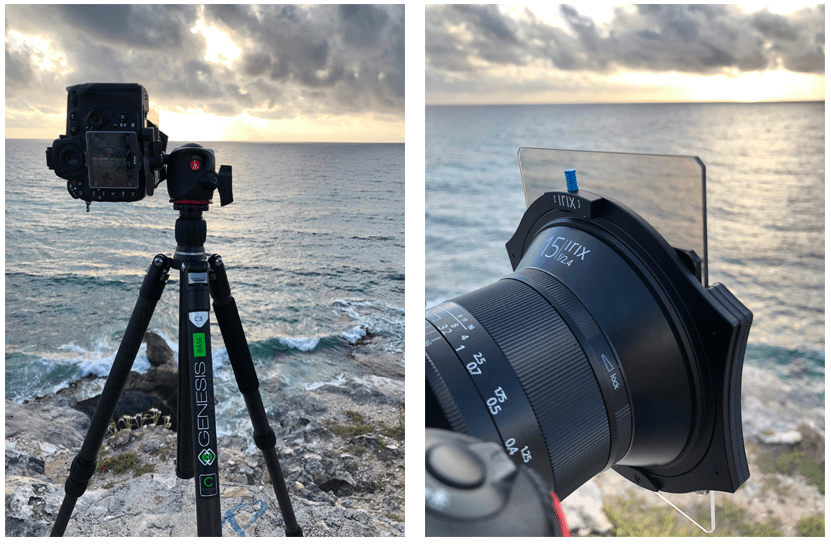
As can be seen, thanks to the filters I’ve been able to capture the ground in full light, saving a lot of light for the sky. Furthermore, despite the cascade of the filters, the overall sharpness of the full shot is perfect and the detail is all there – brilliant!
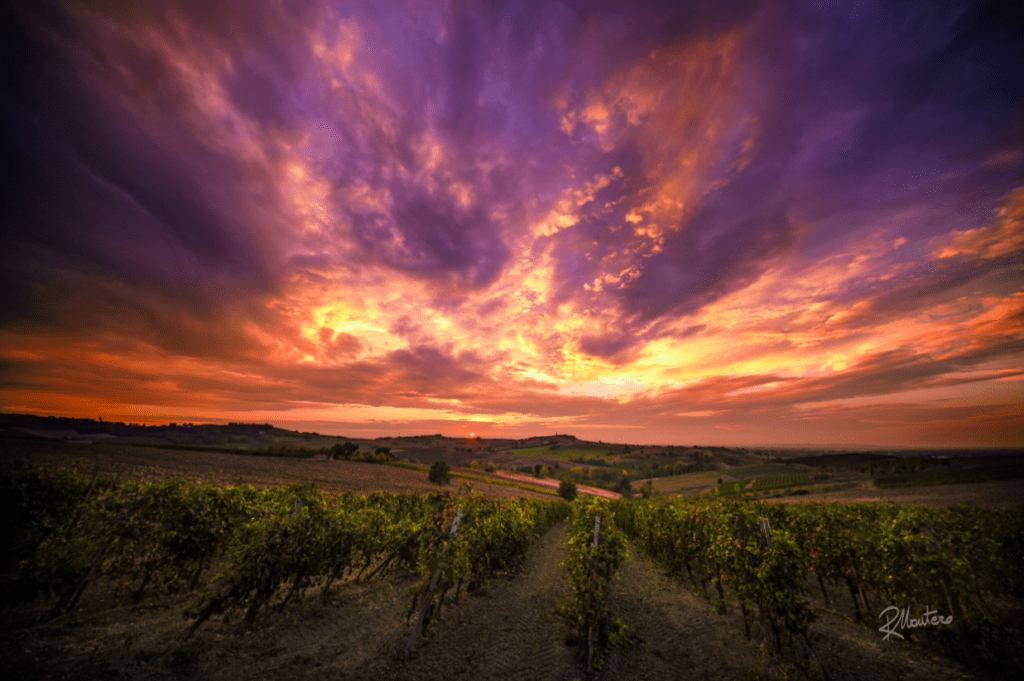
So I’d like to end this small test of Irix Filters with my final image, which I managed to capture during a stunning sunset close to Tortona, on the hills where great wines are produced.
For this shot I used an Irix Edge Soft GND32 (1.5) 5EV nano IR 100x150mm in order to capture this great sky and the interesting vineyard below. Clearly a little recovery of the shadows in post-production helped me to recover some dark areas, but the ND filter was of considerable assistance in avoiding the ‘burning sky’ in an irrecoverable way.
Again, thanks to the filters, I’ve been able to get all the sharp detail I was hoping for, with all of the interesting part of the shot well exposed.
So what else to say in closure? Well, there’s just the one thing for consideration.
The perfect filter combination probably doesn’t exist. Okay, it’s better that it exists for sure, but the perfect set-up of filters changes from time to time, from situation to situation, and it’s one of the main skills of the photographer to guess and make use of it.
So my advice is: test, test and keep testing. Don’t be afraid of using good filters to add something to your creativity; just fear those bad filters!
